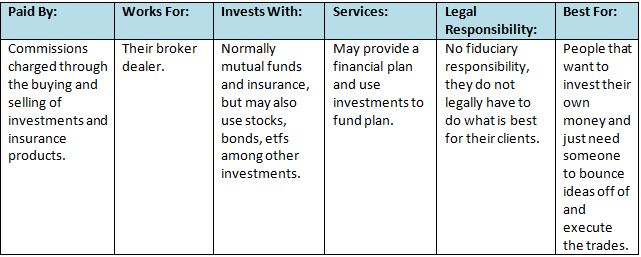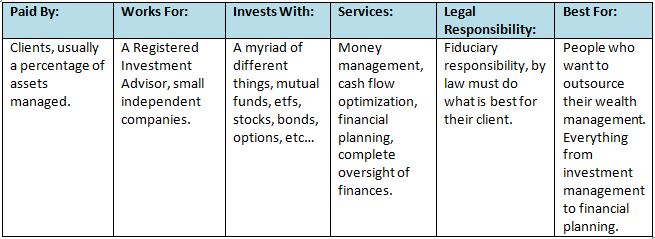A story came out recently about a stock broker that quit after ten years because he realized what he was doing was not in the best interest of his clients. I applaud him for finally recognizing that he was not adding any value and was in fact hurting clients, and for making the change to an Investment Advisor role. However, I have to wonder how it took him 10 years to realize this. You can watch an interview with him here.
I used to work for a brokerage firm as well but it only took me all of 2 years to come to the same conclusion and move to the investment advisor role. I was successful and had a few people under me but at the end of the day I felt icky. I entered this industry to give advice and help people make better decisions. I found myself advising less and less because I was paid on the amount that I sold, not the value that I provided. Investment management is important, but so is practical advice to save clients’ money.
A study was just done on middle class Americans and whether or not they receive advice from a financial professional. An astounding 67% of middle-income America who make between $30,000 and $100,000 said they did not. According to the study not asking a professional for advice costs on average $23,000 per mistake.
Preventing these mistakes and following a financial path is just as important as great investment management and in many cases more important. But people are still reluctant to seek advice. Why is this?
My suspicion is trust. People simply do not trust financial advisors in general. What most do not know is there are two main types of advisors. There are brokers and investment advisors.
The main difference between a broker and an investment advisor is how they are paid, their services and their legal responsibilities. It can be confusing so let me walk you through it.
Here is the breakdown of the business structure for a broker:
In contrast here is the breakdown for an investment advisor:
As you can see the difference is stark. Making the right decision from the beginning sets the stage for a good fit and a beneficial relationship. There are of course other differences, but these are the key ones that are important when choosing an advisor.




